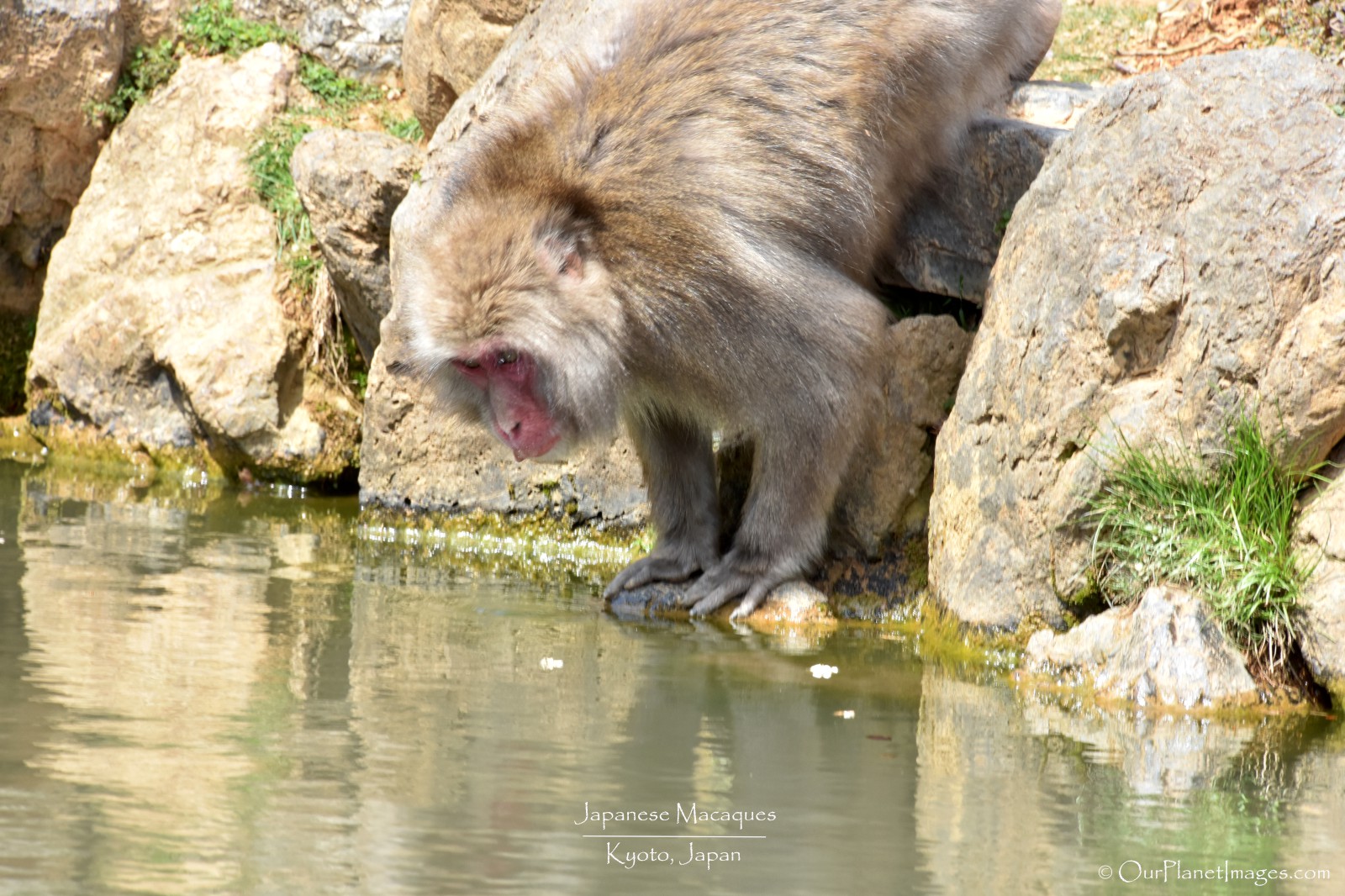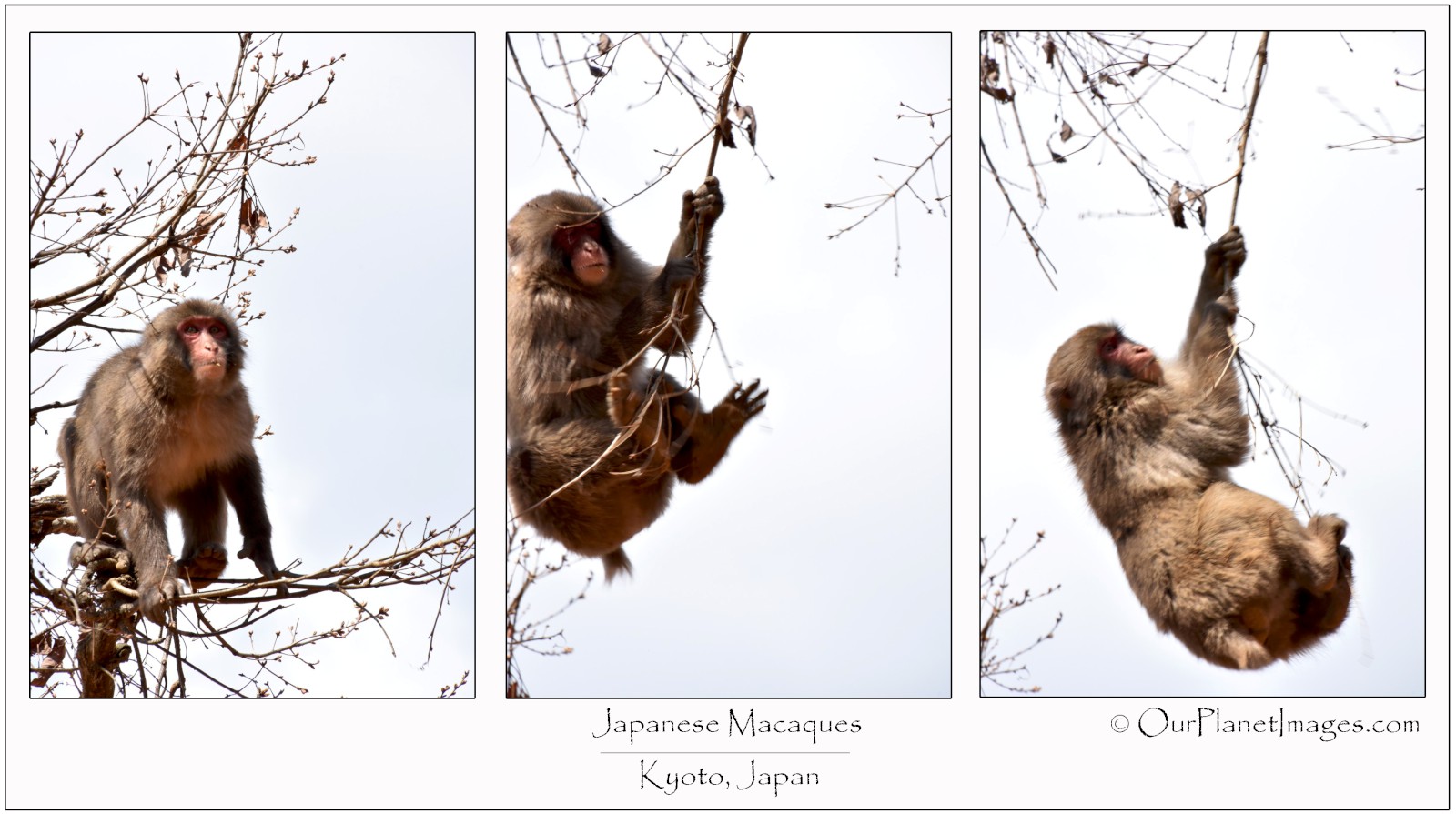Japanese Macaques are the northern most non-human primate. They live exclusively in the Japanese Islands and are found in three of the four main islands (Honshu, Shikoku and Kyushu but not in Hokkaido). They are also known as “snow monkeys” because they live in areas where snow covers the ground for months each year. These are the monkeys that are photographed bathing in warm water with snow on the ground (my photos won’t show this because my photos were taken in the spring).




Japanese Macaques are a medium sized monkey with thick brown to grey fur that helps them cope with winter temperatures as low as -20 degrees C. The males are larger than the females tend to like being on the ground while females spend more time in the trees than males.
Both male and female Japanese Macaques develop red skin on their face but it becomes bright during the breeding cycle. They take about 10 years to become adults and their normal lifespan is about 30 years.





They have tails that are short and stumpy maxing out at about 3.5” long. The short tails makes it less likely to get frostbite in the winter.

Japanese Macaques are omnivorous, meaning they will eat almost anything. There main foods are plants, insects, mushrooms, fallen seeds, fruits, flowers, roots and even soil.



The photos below is of an adult macaque getting a drink from a small pond.


Japanese Macaques live in troops ranging from 10 to more than 100 members mostly dependent on the availability of food within their normal range of about1.5 square miles. The average troop size is around 40 individuals.




They spend about 25% of their time inactive or sleeping. In the winter they will huddle together for warmth but in the warmer months they rest alone but near others.

They spend about 25% of their time social grooming or self-grooming which can be seen in the photo below.

It is common to see Japanese Macaques leaping in the trees but it is unusual to see them swing through the trees or suspended from branches. I was lucky to get the photo series below of a macaque moving between trees by swinging from the branches.


The Dust on My Shoes
One of my favorite times is watching wildlife that are free to range on their own. Some wildlife have become very comfortable with humans but they still have a comfort zone that they don’t like people to invade. Monkeys seem to have become some of the most comfortable animals for allowing humans to enter their habitat and approach them.
One of the best locations to see wild Japanese Macaques is at Arashiyama Monkey Park on the top of Mt. Arashiyama. The Macaques are truly wild but they live on top of the mountain and have become extremely comfortable with humans being very close. They let people get within a couple of feet of them but they don’t like to be touched. The troop that lives on Mt. Arashiyama is around 140 macaques and with a group this size it was easy to see them doing a lot different activities.
I enjoyed spending a couple of hours watching them eat, sleep, groom each other and even swing through the trees.
Related Posts


